1. New Orleans, Louisiana
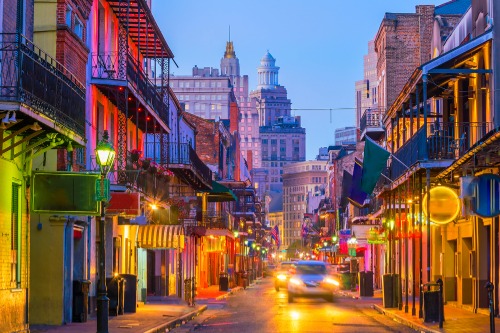
New Orleans has long been a beloved city for its rich culture, food, and music, but in recent years, it’s experienced a renaissance that has further solidified its status as one of America’s top cities. Post-Hurricane Katrina recovery efforts have brought significant improvements to the city’s infrastructure, and there’s been a greater focus on sustainable rebuilding. According to New Orleans Tourism, there are several exciting innovations. The city’s French Quarter remains a popular tourist destination, but neighborhoods like the Bywater and Marigny are becoming more vibrant with new art galleries, coffee shops, and boutique hotels.
The food scene in New Orleans continues to be world-renowned, with both traditional Creole and innovative new dishes attracting visitors and locals alike. Furthermore, the city’s music scene, particularly jazz, is thriving, with venues like the Spotted Cat Music Club hosting live performances nightly. New Orleans has made great strides in its urban renewal efforts, and its unique blend of culture, history, and innovation is what makes it a city with a bright future.
2. Detroit, Michigan
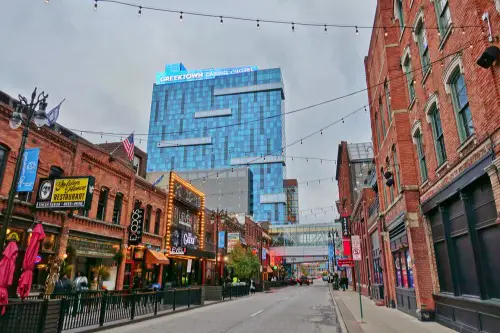
Detroit’s turnaround story is nothing short of inspiring. Known for decades as the Motor City, it fell on hard times during the automotive industry’s decline. However, in recent years, Detroit has been undergoing an urban revival with massive investments in infrastructure and housing, and according to The Guardian, it’s now “buzzing.” The city is now home to a burgeoning tech scene, and startups are sprouting up in downtown Detroit. The once-dilapidated buildings are being repurposed into modern lofts, office spaces, and trendy restaurants, drawing in a younger, more diverse crowd.
The downtown area is seeing the most action, with a wave of new bars, restaurants, and cultural institutions, like the Detroit Institute of Arts, offering a fresh energy to the city. The revitalization extends beyond the urban core, with neighborhoods such as Midtown and Corktown now being seen as thriving communities. The resurgence of live music, the revival of the Detroit auto industry with electric vehicle developments, and the focus on attracting creatives and innovators are contributing to the city’s rapid renaissance. Detroit is no longer the struggling city it once was but is now seen as a city of opportunity and rebirth.
3. Phoenix, Arizona
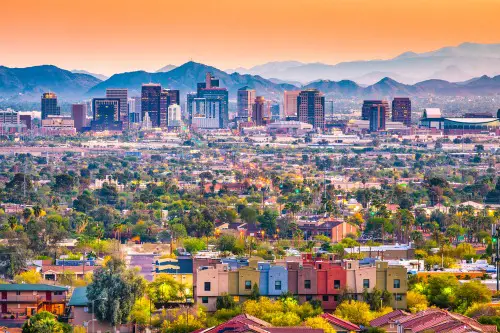
Phoenix has long been known for its hot desert climate, but the city’s recent transformation goes beyond the weather. With rapid urban sprawl and a booming real estate market, Phoenix is now one of the fastest-growing cities in the U.S. The city’s downtown area has seen significant investment, the City of Phoenix reports, particularly in the arts and entertainment sectors. New hotels, galleries, and cultural venues are sprouting up, creating a youthful and creative atmosphere that’s attracting young professionals from all over the country.
Tech companies are flocking to Phoenix, thanks to the city’s affordable cost of living, strong educational institutions, and proximity to Silicon Valley. The influx of people has brought new diversity and energy to the city, and neighborhoods like Roosevelt Row are becoming known for their vibrant street art, independent coffee shops, and unique boutiques. With its combination of economic opportunity, cultural richness, and high quality of life, Phoenix is quickly shedding its reputation as just a desert town and becoming one of the country’s hottest cities.
4. Cleveland, Ohio
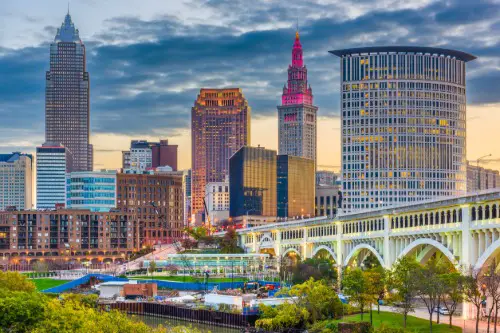
Cleveland may have been known as a rust-belt city, but according to The Washington Post, it has seen a major transformation over the past decade. The Cleveland Clinic has made waves as one of the world’s leading hospitals, helping elevate the city’s profile in the medical and health sectors. This has spurred growth in healthcare innovation and attracted talent from across the country. Meanwhile, the tech scene is thriving as young professionals are flocking to the city for affordable living and a growing startup ecosystem.
Beyond business and tech, Cleveland has undergone a cultural renaissance. The city’s historic neighborhoods like Ohio City and Tremont are bustling with new breweries, art galleries, and restaurants. The Cleveland Museum of Art and the Rock and Roll Hall of Fame continue to attract visitors from around the world, adding to the city’s cultural allure. The revival of the downtown area and investment in public spaces have made Cleveland an attractive place for people seeking a blend of history, culture, and modern living.
5. Pittsburgh, Pennsylvania
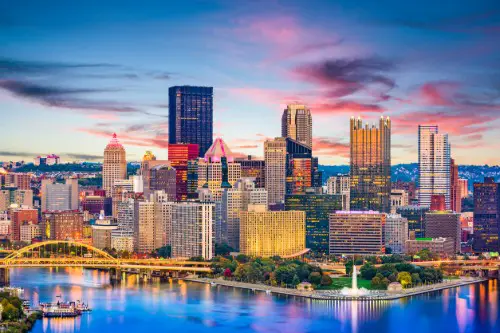
Pittsburgh is often referred to as the “comeback city,” and for good reason. After losing its industrial backbone in the 1980s, the city turned its focus toward education, healthcare, and technology. Today, Pittsburgh is home to world-class institutions like Carnegie Mellon University and the University of Pittsburgh, which are driving the city’s growing reputation in research and innovation. It’s also a leader in robotics and artificial intelligence, fields that are attracting top-tier talent.
The city has undergone a massive urban renewal, with former industrial areas being transformed into modern, walkable neighborhoods. The Strip District, once filled with warehouses, is now a trendy area full of food markets, boutiques, and artisan shops. Pittsburgh’s downtown area is thriving with new office buildings and high-end residences. What was once a blue-collar city with a struggling economy has become a hub of technology, innovation, and culture that attracts both young professionals and families alike.
6. Richmond, Virginia

Richmond, Virginia, has managed to reinvent itself from a city long associated with its Civil War history into a dynamic cultural hub. The downtown area has seen revitalization efforts aimed at attracting young professionals, with new bars, restaurants, and residential spaces making it a more desirable place to live. The Riverfront area is now home to parks, walking trails, and public art installations, creating a space where locals can enjoy the outdoors while also connecting with the city’s history.
Richmond has also made great strides in its food and arts scenes. The culinary offerings, including new breweries, restaurants, and food trucks, have brought a fresh energy to the city. Richmond’s art scene is flourishing, with festivals and events taking place year-round that celebrate local artists and performers. With a greater emphasis on inclusivity and innovation, Richmond has managed to shed its outdated image and is now a city that appeals to both history buffs and creative types.
7. Charlotte, North Carolina
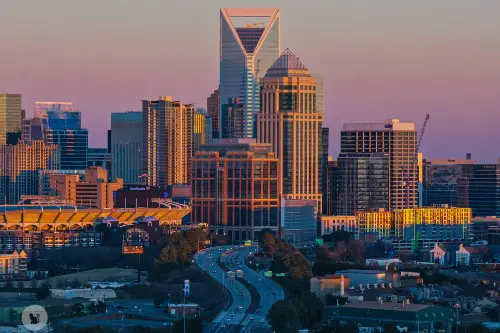
Charlotte, North Carolina, is a city that has seen tremendous growth over the past decade, and according to the City of Charlotte’s official page, it’s not slowing down. Known as the financial capital of the South, Charlotte’s economy has diversified significantly, and the city has become a major hub for tech, healthcare, and energy. Major companies are setting up shop here, creating thousands of jobs and contributing to the city’s rising reputation as a place for career opportunities. The housing market has exploded, and neighborhoods like NoDa and South End are attracting younger residents looking for an urban lifestyle.
Beyond business, Charlotte has invested heavily in public transportation and green spaces, improving the city’s livability. The arts scene has also flourished, with a growing number of galleries, theaters, and music venues contributing to a more vibrant cultural landscape. Whether you’re into professional sports, fine dining, or outdoor adventures, Charlotte has become a well-rounded city that’s offering something for everyone. Its transformation has turned it into one of the Southeast’s most exciting and fastest-growing metros.
8. St. Louis, Missouri
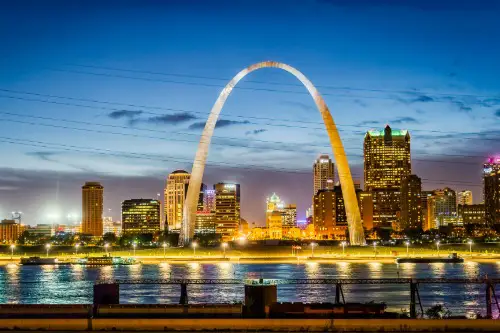
St. Louis had long been overlooked as a major city, but things are changing. In recent years, the city has seen a significant rise in real estate development and the renovation of historic buildings. The area around the Gateway Arch has been completely reimagined, making the national landmark even more accessible and engaging for visitors. The new museums, parks, and attractions are drawing tourists, while revitalized neighborhoods like The Grove and Cherokee Street are becoming hotspots for locals.
The food scene in St. Louis has also played a huge role in its renaissance. The city is becoming known for its culinary innovations, especially in the realm of craft breweries, barbecue, and local artisanal products. Additionally, St. Louis is starting to become a hub for tech innovation with several co-working spaces and startup accelerators opening up in recent years. A greater focus on the arts and entertainment, from theater to music, has given the city new cultural relevance, transforming it from a once-forgotten destination to a vibrant cultural center.
9. Kansas City, Missouri
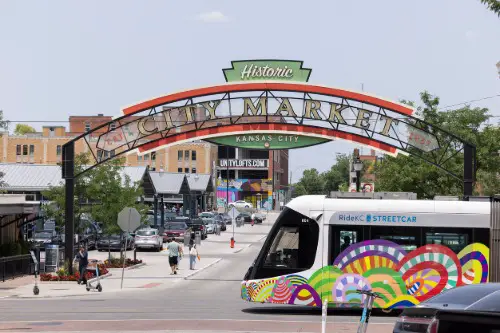
Kansas City is having quite the renaissance, with an urban revival that’s impossible to ignore. The city is known for its jazz history, but today, it is expanding beyond that legacy. The Power & Light District and the Crossroads Arts District are bustling with new businesses, restaurants, and cultural venues that have given the city’s downtown area a much-needed facelift. The city is also embracing its barbecue roots, with dozens of renowned restaurants and food festivals celebrating the rich culinary history.
Kansas City’s growing tech scene is drawing in young talent, while institutions like the Nelson-Atkins Museum of Art continue to elevate the city’s cultural standing. The addition of a streetcar system has made it easier to navigate the downtown area, encouraging residents and visitors alike to explore all that Kansas City has to offer. With its combination of tradition, innovation, and a growing sense of urban sophistication, Kansas City is showing the world it’s more than just a stopover on the way to somewhere else.
10. Baltimore, Maryland
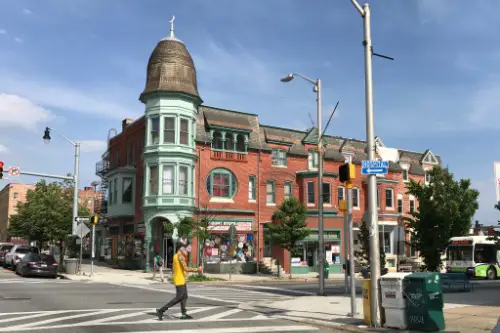
Baltimore, a city long associated with industry and urban blight, has made strides in transforming its waterfront and revitalizing its neighborhoods. The Inner Harbor, once in disrepair, has become a thriving tourist destination with new shops, restaurants, and attractions. The city’s arts scene has exploded in recent years, with more galleries, music venues, and theaters drawing both locals and visitors to enjoy its cultural offerings.
Baltimore’s tech and innovation scene is also growing. The city’s proximity to Washington D.C. and its major universities, such as Johns Hopkins, have positioned it as a hub for research, healthcare, and cybersecurity. Moreover, the city is investing in housing and public spaces to ensure that its revival is sustainable. The combination of economic growth, cultural flourishing, and strong educational foundations has helped Baltimore shed its old image and embrace a more modern, forward-thinking identity.
11. Tampa, Florida
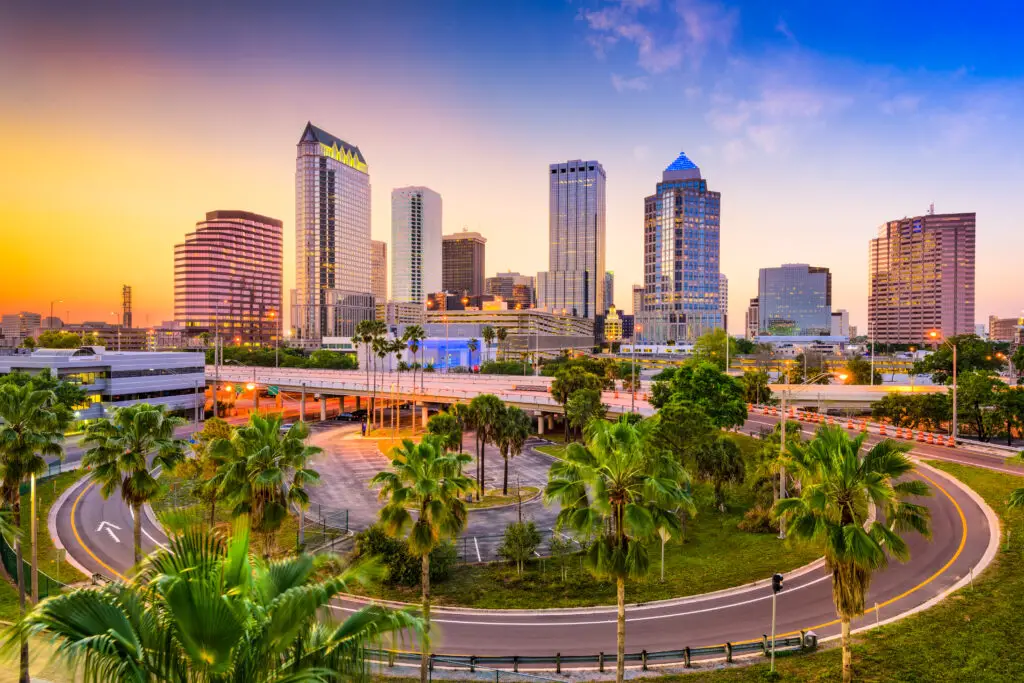
Tampa, often overshadowed by nearby cities like Miami, is having a renaissance of its own. With an influx of young professionals and families, Tampa’s downtown has undergone significant changes. The Riverwalk, a newly revitalized waterfront area, offers picturesque views and a host of restaurants, museums, and parks. The city is investing heavily in public transportation and green spaces, making it a more walkable and livable place for residents.
Tampa’s tech scene has also been growing, attracting entrepreneurs and companies in sectors ranging from cybersecurity to healthcare innovation. The food scene in Tampa is thriving too, with a mix of Cuban, Spanish, and Southern influences that reflect the city’s diverse culture. Tampa’s combination of modern infrastructure, a growing economy, and a laid-back lifestyle has helped it shed its former image as a quiet, under-the-radar city and become one of Florida’s most exciting metros.
12. Indianapolis, Indiana
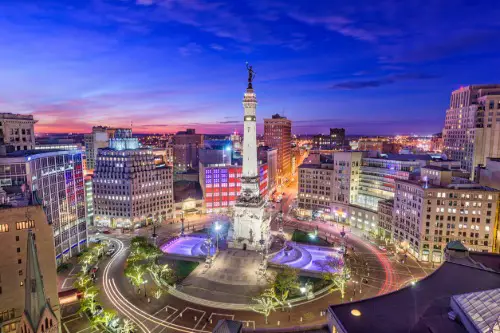
Indianapolis, known for its famous 500-mile race, has been steadily reinventing itself as a vibrant city with a focus on urban living and sustainability. The city has invested heavily in its downtown area, with new apartments, offices, and entertainment options. The Indianapolis Cultural Trail, a network of bike paths and walking trails, connects some of the city’s most important cultural institutions, making it easier to explore the city’s growing arts scene.
The tech and manufacturing industries have become pillars of Indianapolis’s economy, while its sports culture remains strong. The rise of microbreweries, locally owned restaurants, and boutique shops has transformed neighborhoods like Fountain Square and Broad Ripple into bustling, sought-after areas. Indianapolis is becoming known for its affordability and high quality of life, which are drawing young professionals and families to settle down in the heart of the Midwest.
13. Minneapolis, Minnesota
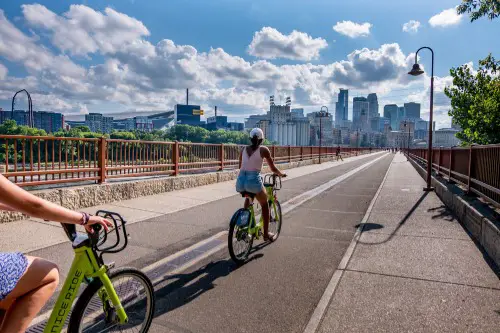
Minneapolis has undergone a significant transformation, particularly in terms of its commitment to sustainability and inclusivity. The city is increasingly recognized for its innovative public policies, green spaces, and thriving cultural scene. The rejuvenation of neighborhoods like the North Loop and Northeast Minneapolis is a testament to the city’s growth. New developments have brought restaurants, bars, and shops to these once industrial areas, creating a vibrant, walkable urban environment.
Minneapolis is also gaining attention as a hub for tech startups, with many young entrepreneurs choosing the city for its affordable cost of living and access to top-tier universities like the University of Minnesota. The city is increasingly known for its diverse food scene, especially its focus on local ingredients and sustainability. The arts, from theater to music, continue to thrive, and the city’s emphasis on bikeability and eco-friendly infrastructure is making it a model for urban living in the 21st century.
14. Austin, Texas

Austin has long been known as a live music capital, but over the past decade, it’s become a true powerhouse for tech, culture, and entertainment. The city’s low cost of living, compared to other tech hubs like Silicon Valley, has made it an attractive destination for companies and young professionals. Austin is now home to a booming tech scene, with major players like Apple, Google, and Tesla making huge investments in the city.
But it’s not just tech that’s drawing people to Austin. The city continues to be a major cultural hub, with a music scene that is unmatched anywhere in the country. South by Southwest (SXSW), an annual festival that celebrates film, music, and interactive media, brings thousands of visitors each year. The city’s focus on sustainability, public art, and vibrant neighborhoods like East Austin and South Congress has helped Austin maintain its charm while welcoming rapid growth. With a combination of opportunity, culture, and livability, Austin continues to attract people from across the nation.
15. Salt Lake City, Utah
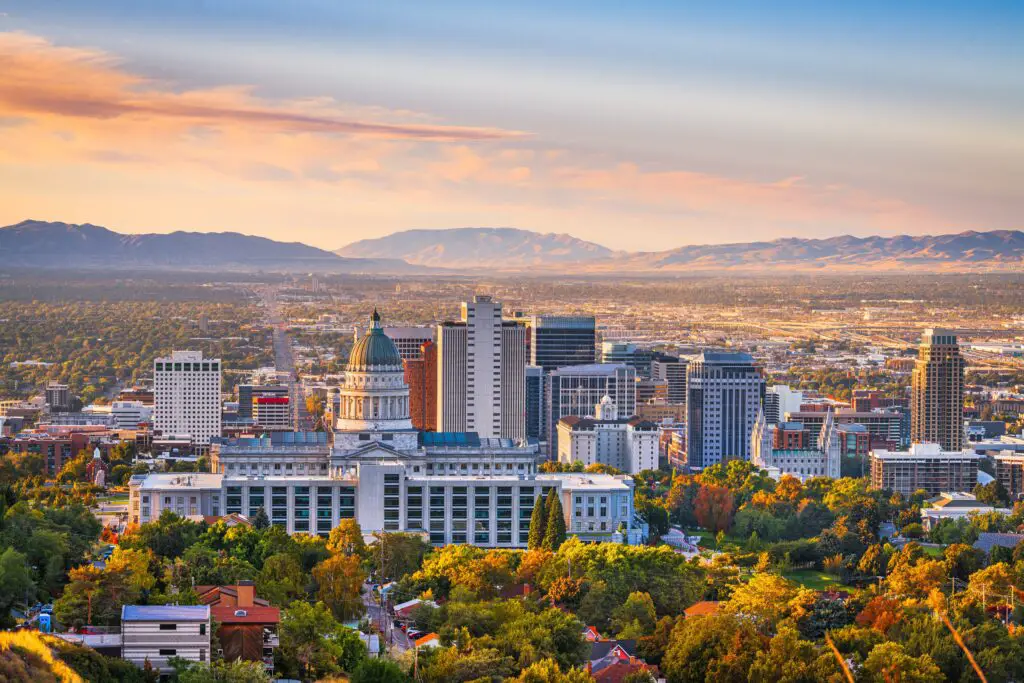
Salt Lake City is experiencing a renaissance driven by a growing tech industry, urban renewal, and an influx of young professionals. The city has become a major player in the tech world, with the so-called “Silicon Slopes” housing numerous startups and established companies. The downtown area has seen significant redevelopment, with new restaurants, bars, and cultural institutions sprouting up all over. What was once a conservative, sleepy city is becoming a vibrant, modern urban center.
The outdoor lifestyle that Salt Lake City offers is another huge draw for residents and visitors. The proximity to world-class skiing in the winter and hiking in the summer makes it a popular destination for outdoor enthusiasts. Additionally, Salt Lake’s growing focus on sustainability and green initiatives has helped it attract environmentally-conscious residents. With its blend of economic opportunity, access to nature, and thriving urban spaces, Salt Lake City is emerging as a true gem in the American West.


